So You Played Baldur's Gate 3 and Want to Check Out More CRPGs - Where Should You Start?
(Originally posted September 8, 2023)
A potentially tough question, since CRPGs (the C stands for Computer!) have a fairly long history and often pretty antiquated (or, if you're feeling generous, classic) gameplay. On the bright side, that means even the big ol' AAA Baldur's Gate 3 isn't really re-inventing the wheel much; if you could get a handle on the number of buttons and abilities you accumulated over BG3, figuring out the older stuff shouldn't be too bad! Chances are you even have some Steam keys for these floating around in your Humble account or something.
This is not meant to be a comprehensive list, just some starting points... okay, a lot of starting points, since the genre is still fairly niche and insular. I've sorted them into a few main categories, not including any games I haven't actually played myself, so there's bound to be some holes. I've never played Dragon Age or Wasteland! Sorry!
So, what exactly do you want out of a CRPG?
"I want more Dungeons & Dragons!"
Baldur's Gate: Enhanced Edition
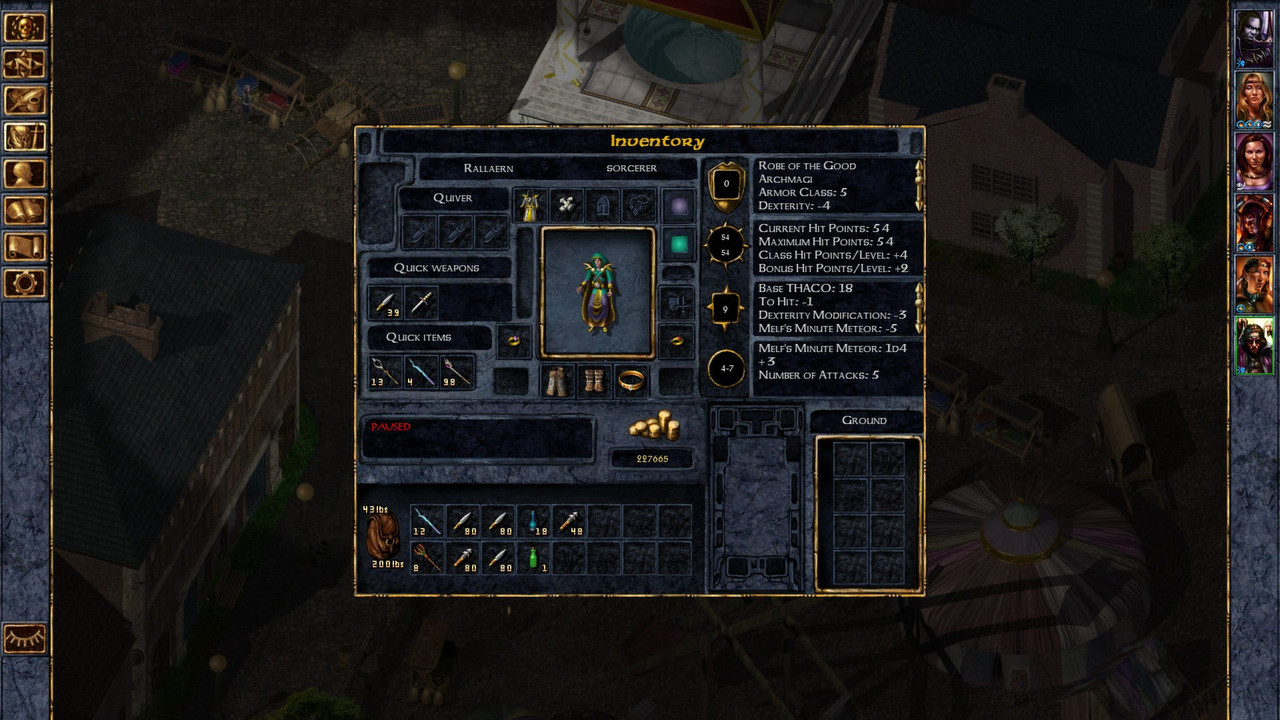
Curious why Baldur's Gate 3 has "3" at the end? Wondering why the game shoves Jaheira and Minsc in your face as if you're supposed to care about these goons? The original Baldur's Gate is a natural place to begin. It's easily accessible on Steam and most other storefronts, and goes for pretty cheap whenever there's a sale.
Biggest Point of Appeal:
Not only is playing BG1 a look at the budding form of this branch of RPG design, but it's a look into what D&D was like back in the 90s. It's committed to being a low-level adventure of traipsing through the woods and fighting kobolds, deliberately mimicking the broad pace of playing at a tabletop. It wasn't the first AD&D game, but it was definitely The AD&D game.
Biggest Sticking Point:
Well, AD&D! Since this is adapting the AD&D (or 2e) ruleset, classes are much more rigidly defined and you have to figure out why you want a lower Armor Class. If you're like me, you blundered through every locked chest and trapped hallway in BG3 with your Heavily Armored Frontliner wearing Gloves of Dexterity and getting Guidance cast on them every 60 seconds. In BG1, you can't even attempt those checks unless you're a Rogue. And alas, yes, you'll have to deal with THAC0... unless you play on Story Mode or use cheats. I heartily recommend either or both; life's too short to bash your head against a basilisk ambush for two hours.
A modern player would probably also have to adjust to how companions work. They don't even really have conversation trees yet; that isn't until Baldur's Gate 2. Instead, you're expected to select them for the sake of the party composition; they're statblocks before they're characters. BG1 has a wide range of party members across the class and alignment spectrum with an implicit understanding that if you're playing a Fighter, you might want to forego recruiting a second one in favor of hanging out with a Cleric or Mage.
If you'd rather try out the level range you weren't allowed to play with during BG3, then it's perfectly acceptable to skip straight to Baldur's Gate 2: Shadows of Amn, which I personally find to be the better game. You'll lose out on a bit of context, but it's all stuff that was explained to you in 3 as it is! Life's too short to spend on levels 1-8 anyway.
Neverwinter Nights: Enhanced Edition
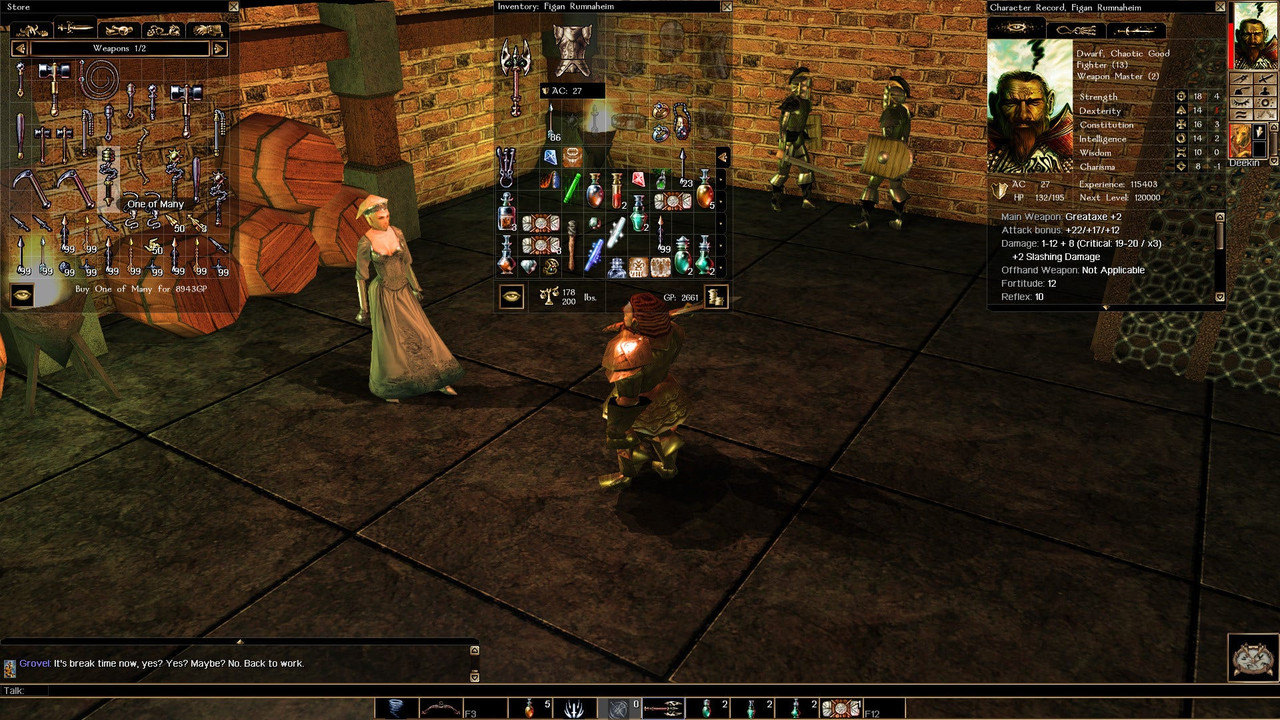
The jump to three dimensions and the Third Edition of D&D! The big selling point of NWN at the time was its capacity to support user-made content and modules; it's perhaps the first VTT, in a sense. I remember picking this up at Office Depot when I was a wee lad because it looked cool and then mostly just dicking around with console commands because I didn't quite understand what was going on.
Biggest Point of Appeal:
The breadth of user-made modules and campaigns available. There's still a pretty active scene over at Neverwinter Vault churning out new content, though as you might expect it varies wildly in quality. I've only checked out one or two, but some of that shit is incredibly impressive. Pretty sure there are even some persistent servers for an MMO-like experience.
Biggest Sticking Point:
Early 3D games are all a bit clunkier than Late-2D games; it's just how it is. The UI is MMO-like in that it's a bunch of bespoke windows that you can drag around... but that means everything is tiny and hard to parse. Learn to utilize the hotbar early and often, lest you do tons of fiddling in weird radial menus.
Also, I'll say it straight out: skip the base campaign. I've complained at length about how Baldur's Gate 3 is a pretty generic "greatest hits" of D&D, but it's high art compared to NWN and its cardboard cutout paladin Lady Aribeth. Instead, play the included duology of Shadows of Undrentide and its sequel Hordes of the Underdark. They're still about as standard as they come in terms of being Forgotten Realms Adventures, but with a more engaging verve and enthusiasm to their writing and progression.
Neverwinter Nights 2
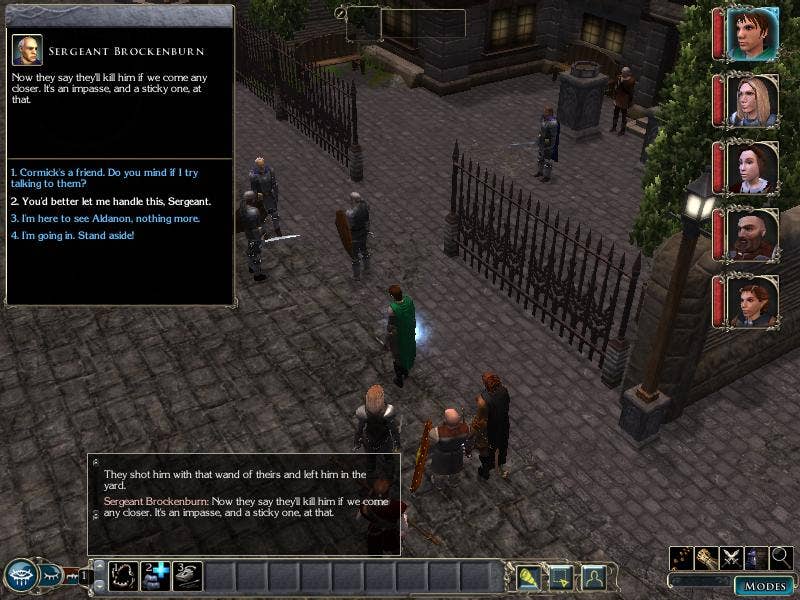
The B-Team Sequel by Obsidian, and unfortunately the only game on this list not available on Steam. It makes the system jump from 3rd Edition to 3.5 and the character models no longer have toasters for hands, but the UI is only somewhat better than NWN1. Of the D&D games, this probably? comes the closest to the same "texture" of scale as BG3.
Biggest Point of Appeal:
The quest design, which does vary across the game but has some great standout moments, especially once you actually get to Neverwinter. There's an entire arc of the game where you're accused of murder and must not only investigate the crime, but wiggle your way into becoming an official knight for the sake of exploiting a legal loophole that allows you to defend yourself in the first place.
Biggest Sticking Point:
The game is too damn long! It's a huge Sword Coast adventure comparable in length to Baldur's Gate 3, spanning the entire 1-20 level range. This isn't really a good thing because it's also some primo "Generic D&D" Forgotten Realms stuff. You will have to deal with Khelgar Ironfist, the Drinking-and-Fighting Dwarf for the whole-ass game.
Despite that, the game does possess some of the wry, genre-aware writing you might expect from Obsidian (or might not, because if you're reading this post you may not know/care who Obsidian are!); it just takes a while to get there. If you can allow yourself to get into the mood of starting out as a farmhand and slowly becoming the heroic Knight-Captain of Neverwinter by killing 1000 orcs and facing the Lord of Shadows, you can have a good time. More importantly, you'll be ready for the expansion, but we'll get there.
~
"I want to stack crates and make gas clouds explode exactly like in Baldur's Gate 3!"
Divinity: Original Sin 2 - Definitive Edition

Mechanically - I mean, apart from the 5e stuff - this is the basis for Baldur's Gate 3. The physics systems, the terrain effects, the talking to animals, it's all here with Larian's proprietary setting and combat ruleset (which is honestly probably better put together than 5e's combat). It's the game what convinced Hasbro to give Larian the license for BG3 over Obsidian, Beamdog, or inXile.
Biggest Point of Appeal:
You can stack crates and make gas clouds explode just like in Baldur's Gate 3. If the most appealing things to you about BG3 were the wacky "I throw a barrel!" shenanigans and the immersive-sim-like mechanical interactions, then this one's for you.
Biggest Sticking Point:
The Origin Character system constantly pits your party against each other by giving them quests with conflicting objectives. This probably works better in a social multiplayer setting, but it drove me up the wall while playing solo. You also need to pick your favorites quickly, because the game locks them in after a certain threshold.
Full disclosure: I never completed this game, mostly because I didn't really enjoy... well, the writing, characters, and setting. I also got really tired of moving vases onto trap vents in the ground. Now that I've played BG3 and have a better grasp on how Larian does things, I might give it another shot.
~
"I want fantasy, but *not* D&D!"
Pathfinder: Wrath of the Righteous
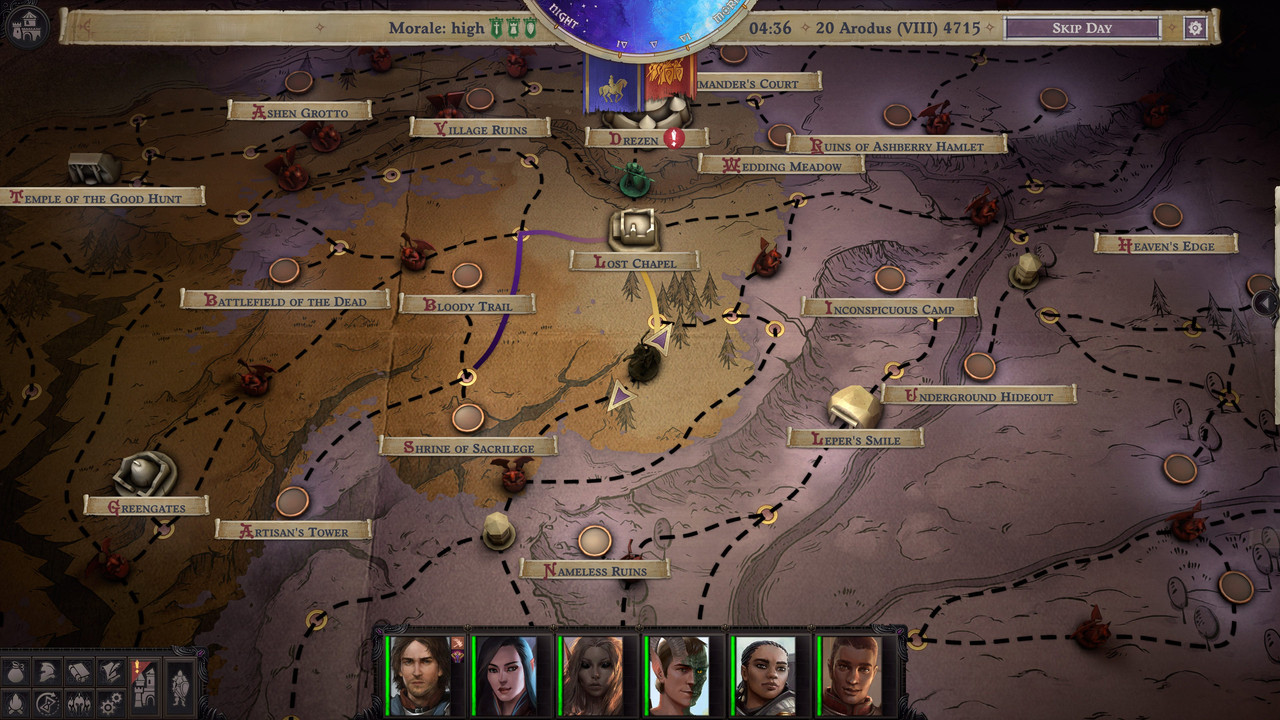
The second (and nominally better) of the Owlcat RPGs, which runs on the (in)famous Pathfinder system, a spinoff of 3.5e. On a broad level, their two games are incredibly well put-together, but neither really inspires me. They're both based on existing Pathfinder tabletop modules, which is good because you know they have a solid framework underneath, but bad because they don't really deviate from a standard adventuring story.
Biggest Point of Appeal:
The sheer breadth of character build options in Wrath of the Righteous is staggering. There are like 25 classes and each has 6-10 sub-archetypes to mix and match, and that's not even getting into Mythic Paths, the big back-of-the-box feature that lets your character ascend as some kind of greater being like an angel or lich. If what you really liked about BG3 was fiddling with the numbers game, Pathfinder is here for you.
Biggest Sticking Point:
The Crusade system. The game is all about leading a crusade against the encroaching demon horde, and so separate from the standard party-based adventuring is a Might & Magic style mass combat layer where you move your armies around the world map and get into grid-based skirmishes. This is unfortunately mandatory, but you might find it quite engaging.
Pathfinder: Kingmaker did come out first and honestly might be a better "starting point", but I also don't think it has a meaningful advantage over some of these other games in its theming and subject matter. If you find the RPG fantasy of "I want to settle an untamed land and become monarch!" more appealing than "I want to lead a band of heroes into the heart of evil!", then check out that one instead.
Pillars of Eternity
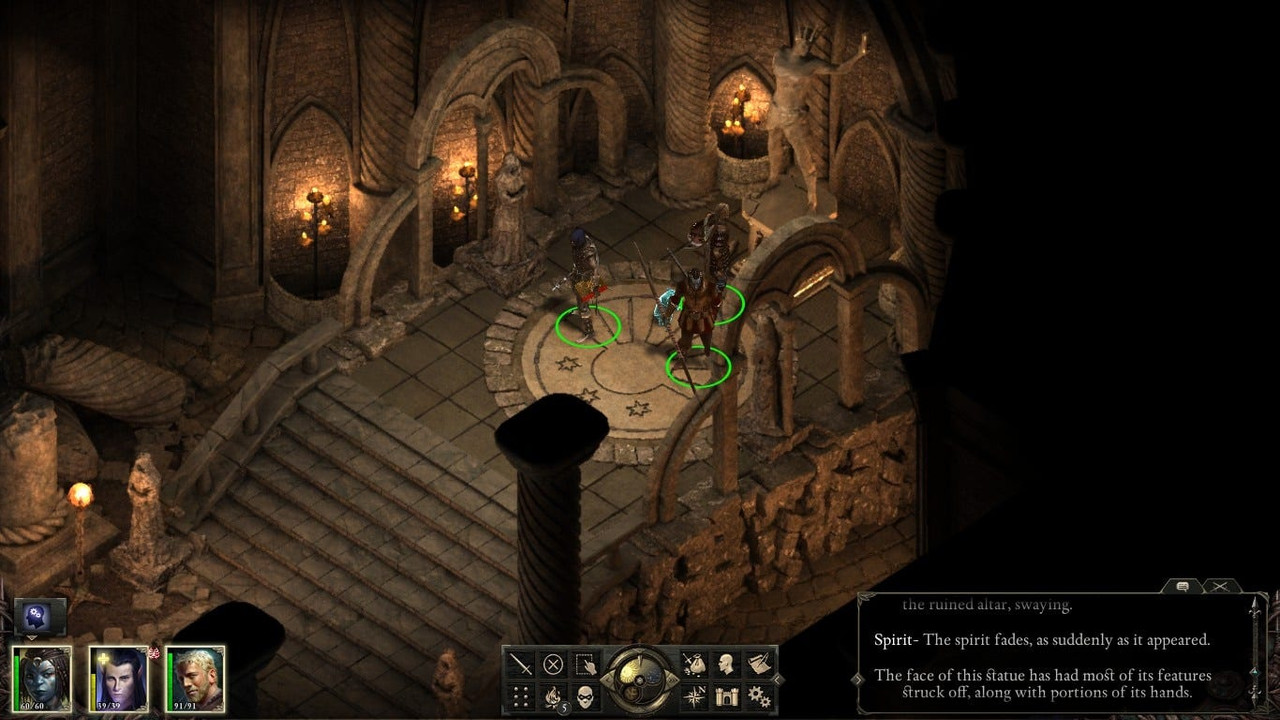
One of the early Kickstarter successes as "Project Eternity", Pillars of Eternity is a personal favorite of mine and perhaps the best all-around introduction to what to expect from CRPGs, warts and all. It evokes older games but the UX is decidedly modern, smoothing down some of the worst fiddly bits about the Infinity Engine.
Biggest Point of Appeal:
Eora is still broadly a D&D-inspired fantasy world, but the team at Obsidian (and especially the game's director, Josh Sawyer) put in a lot of work to include specificity and recent history that feels directly relevant to the plot and characters. You're exploring a region still recovering from a religious war ended by a magical nuke, and this recent event informs every aspect of the game's story.
Biggest Sticking Point:
Pillars runs on its own D&D-adjacent system - which is good in that it avoids some of the mechanical pitfalls of D&D - but it can get a bit overwhelming; it feels rather opaque unless you put the time into understanding it. The first game also doesn't let you preview future abilities while levelling up, so be prepared to respec at an inn once you have a tighter grasp of the systems.
Its DLC expansion - The White March parts I and II - and full sequel - Deadfire - are both excellent as well. If there's any big downside to Pillars of Eternity, it's that it gets a bit bloated by the end: there's about one major hub town too many in the base game, tossing a bunch of side-quests at you right as the story is reaching its climax. Just like Baldur's Gate 3!
Tyranny
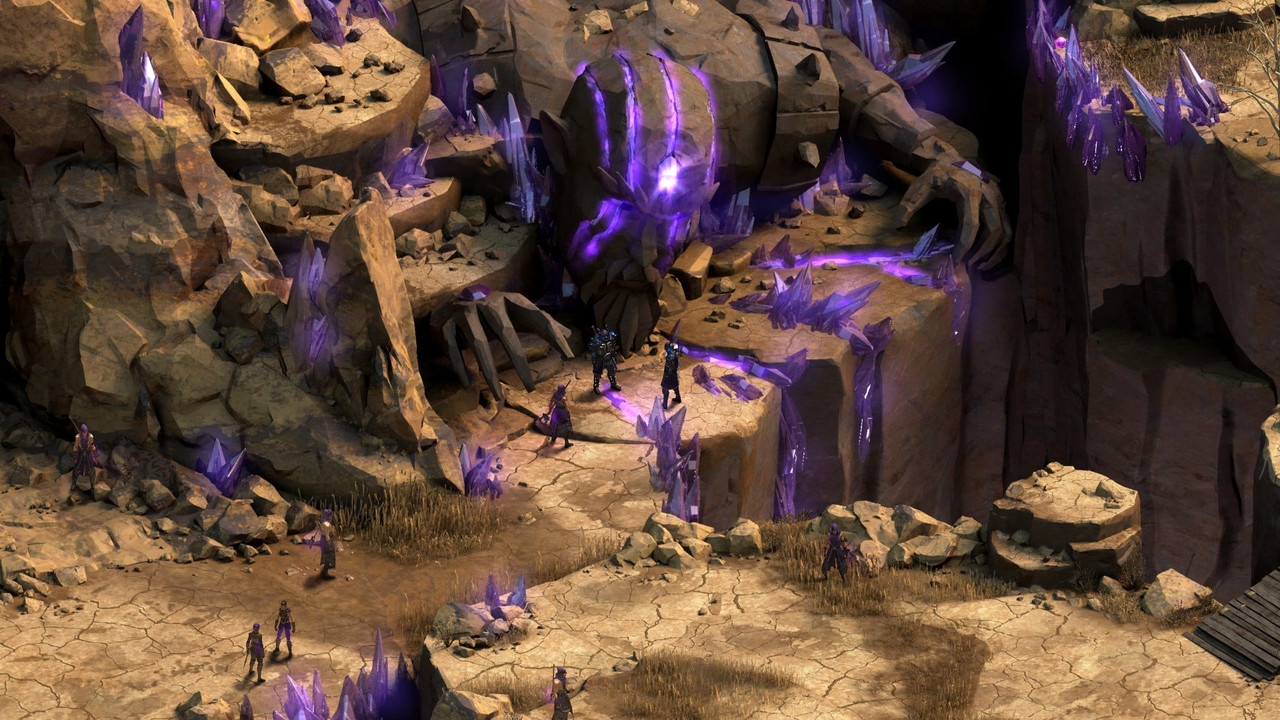
Most of these games offer some kind of "evil" roleplay path, but Tyranny is the only one where that's the default. You play as one of the Evil Overlord's legal enforcers during the conquest of the final corner of the continent in a Bronze Age world, down to defining your role across the past few years of the war. It also includes a robust spell-creation system where you construct "words" out of various accents and expressions.
Biggest Point of Appeal:
The setting and subject matter of Tyranny feel genuinely unique among CRPGs. The idea of multiple factions all butting heads is familiar, but - in Obsidian fashion - they're all informed by the specific politics and circumstances of the world. And so are you, since you're already assigned a role: if you want to be "good" or "nice", you're going to have to really work for it, because the mechanisms of society aren't designed to be either of those things.
Biggest Sticking Point:
If you want to be "good" or "nice", you're going to have to really work for it. Tyranny is a game of gray morals, and some moments are definitely more nuanced than others. Sometimes you're exploiting loopholes to allow the (technically illegal) greater good to occur, but also sometimes it dips down into "but would you... kill this baby??" level tomfoolery.
Also, well, Tyranny is kinda unfinished. Not in a "this game is broken as shit" way like KOTOR 2, but in more of a "the plot ends on a bizarre cliffhanger and there's no way it will ever get a sequel" kind of way. There's still a lot to love here, but you may not be satisfied by how it ends. On the bright side, its relatively short length and relatively high level of story mutability makes it well suited to multiple runs.
~
"I want science fiction!"
Fallout: A Post Nuclear Role Playing Game

Chances are you probably played Fallout 3 or Fallout 4 even if Baldur's Gate 3 is your first big CRPG, hypothetical reader of this post who doesn't play many RPGs. Why not give the first (yes I know Wasteland came first, I'm sorry, I've never played it) post-apocalyptic RPG a shot? The original Fallout is arguably the codifier of the entire CRPG genre, so much so that its influence leaked out of the video game sphere. Feats in D&D 3e? Probably based on Fallout perks!
Biggest Point of Appeal:
You really can't discount the historical value of the first Fallout. Which is not to say there isn't any other reason to play it, obviously. It might surprise you to see the depth in the writing and the bite behind the satire, especially if you're only familiar with the Bethesda-made Fallout games.
Biggest Sticking Point:
The game feels old, like every individual piece of the UX is a rusty gear waiting a half-beat too long to clunk into place. This is back when PC games expected you to have and read a manual, you know? It's not like the UI is complicated, but it's definitely antiquated; you'll probably have to fiddle a bit.
It's been many years since I've played Fallout, so my memories are honestly pretty hazy, but it was kicking around in my headspace after I watched Noah Caldwell-Gervais' excellent retrospective. It's worth giving his videos a look even if you aren't going to play anything on this list.
Mass Effect: Legendary Edition
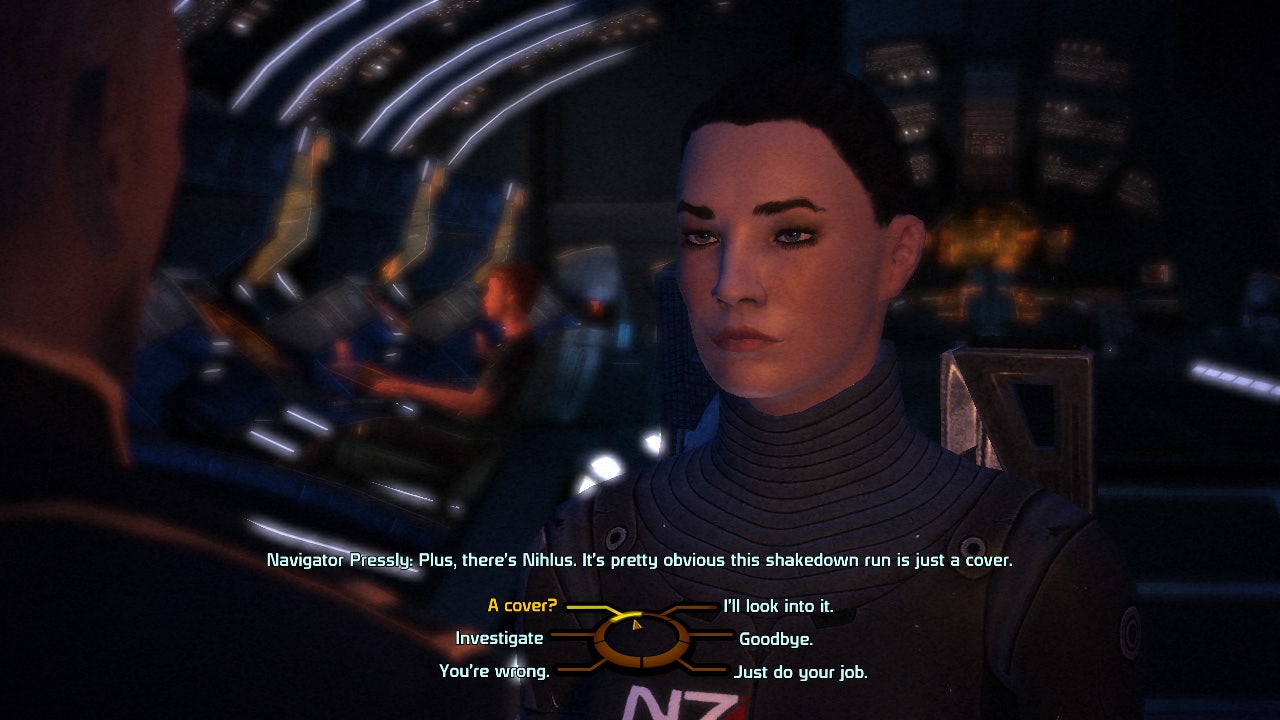
Bioware changed CRPGs forever with Baldur's Gate and became a household name with KOTOR, and Mass Effect was their shot at a new sci-fi universe. It starts out with a bunch of obvious alien analogues to D&D races, but the unique appeal of the setting quickly comes into its own identity. The save transfer feature, where you carry choices through the whole trilogy, remains an incredible feat.
Biggest Point of Appeal:
The party members are great, especially in Mass Effect 2. My most cherished memories of the series all involve walking around the ship and simply talking to the crew, learning more about them and the state of the galaxy from their perspectives. Mordin probably cracks my personal "Top 5 CRPG Party Members of All Time" list.
Biggest Sticking Point:
Mass Effect 1 is an incredibly slow, repetitive game with a major overreliance on prefab environments and crappy vehicle segments. It's extremely important for the sake of setting up the franchise, but I genuinely recommend either not bothering with most of the sidequests or making heavy use of mods/cheats to get your save in shape for ME2. Uh, if you're into that.
I'm absolutely cheating by putting Mass Effect here; it probably doesn't truly belong, especially as it becomes more and more of a shooter with light RPG elements as the series progresses, but it was an important stepping stone in my own personal investment in CRPGs. It's also by a wide margin the most "produced", AAA game on this list, and therefore likely the most accessible to someone who would find playing Old Games a hurdle.
~
"I want science-fantasy! Maybe even fantasy-science!"
Shadowrun Returns Trilogy
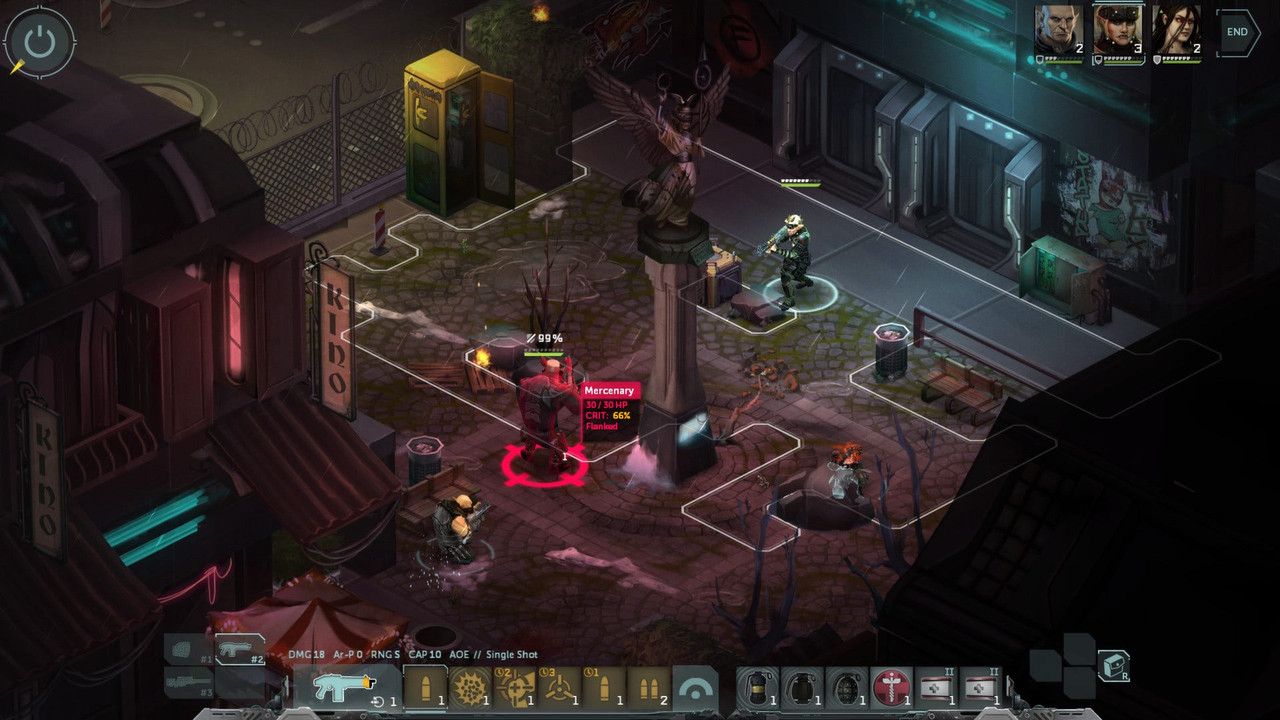
Shadowrun is a classic TTRPG where magic - elves, dragons, et cetera - returned to the world right as it became a cyberpunk dystopia. You wanna be an ork with a cyborg arm and a katana? You can do that. It's definitely a unique flavor that I wish was a bit more common. I link the Trilogy bundle here (it tends to go on deep sale, like 80%) but they're all standalone titles, each better than the last.
Biggest Point of Appeal:
Dragonfall and Hong Kong have some great characters (Glory from Dragonfall probably also cracks my personal "Top 5 CRPG Party Members of All Time" list) and they all feel informed by the specifics of Shadowrun's bizarro kitchen-sink setting. There's also a surprising amount of mutability in the text depending on how you've been acting and who you bring along on a given mission.
Biggest Sticking Point:
The combat can get rather same-y. It takes some cues from the modern X-Com games - half cover, full cover, flanking - but once you really get down to it, there isn't much difference between a gun that does 12 damage and a spell that does 12 damage. The later games add more unique abilities, but it all still runs on the same chassis.
This is another situation where I'd advise to skip the first game. Baseline Shadowrun Returns is a perfectly cromulent game, but especially in hindsight it feels more like a proof of concept for the other two. It doesn't have any meaningful party members and the final dungeon is so bad I wrote a post about it.
Torment: Tides of Numenera
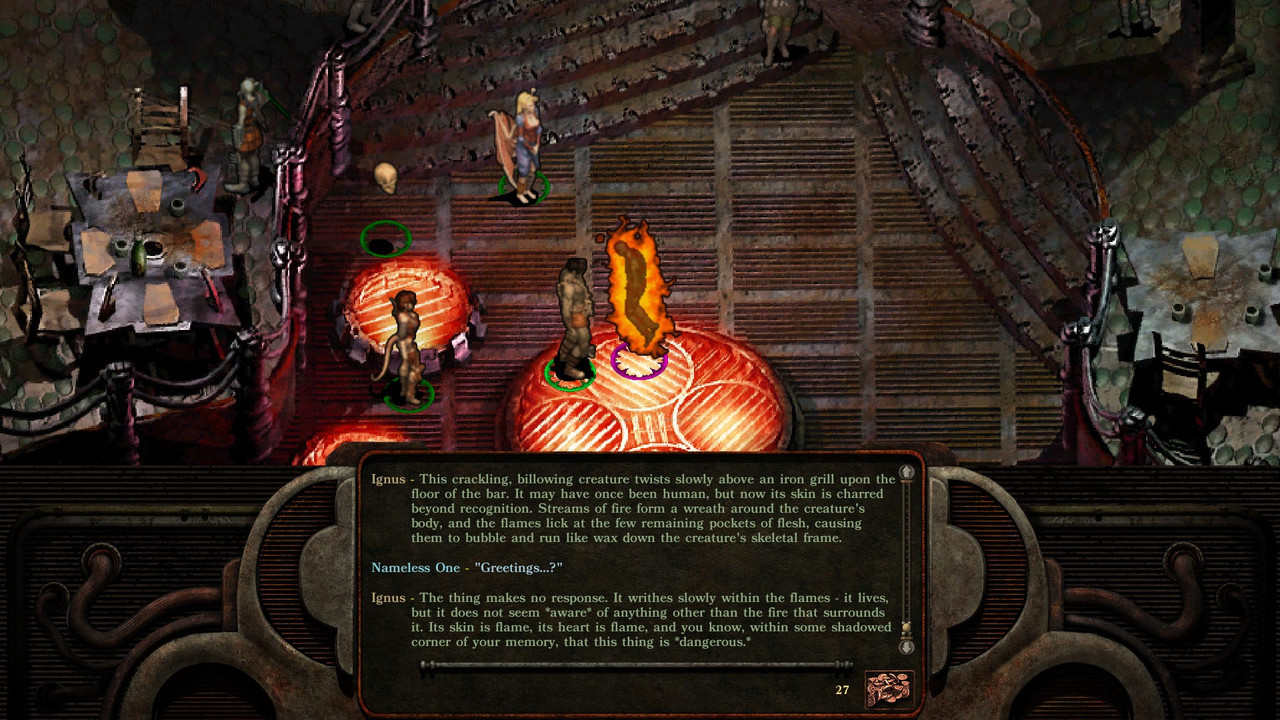
Another early Kickstarter success, this game uses Monte Cook's Numenera (now Cypher) TTRPG system and was intended as a successor to the seminal Planescape: Torment. You play as a Castoff, a sort of clone body that gained sentience after its creator finished driving it around for his own purposes. This is far from the most esoteric concept in the game.
Biggest Point of Appeal:
Numenera's setting - "The Ninth World" - is some primo science-fantasy. It's easy to just quote Clarke's third law, but Numenera keeps hammering it into every part of the world until even the finest sand is made out of nanomachines. You're constantly running into weird, cool, utterly bizarre situations that freely mash together any aesthetic to the point where the potential incongruity is the aesthetic.
Biggest Sticking Point:
While Numenera is full to bursting with cool ideas, that means it lacks a thematic core. For example, there isn't really a good reason for the companions to journey with you other than for the sake of having a bunch of weird companions to talk to. The game feels much more like an exploration of various things you can do with the setting than a specific story within it.
I've been part of some discussion lately about spiritual successors and follow-ups, and I think Tides of Numenera falls into some of those same conceptual pitfalls in trying to be a Torment game (I've called it the I Am Setsuna to Planescape: Torment's proverbial Chrono Trigger). You might be better served playing it without any of that baggage to enjoy its own unique merits.
STAR WARS™ Knights of the Old Republic™
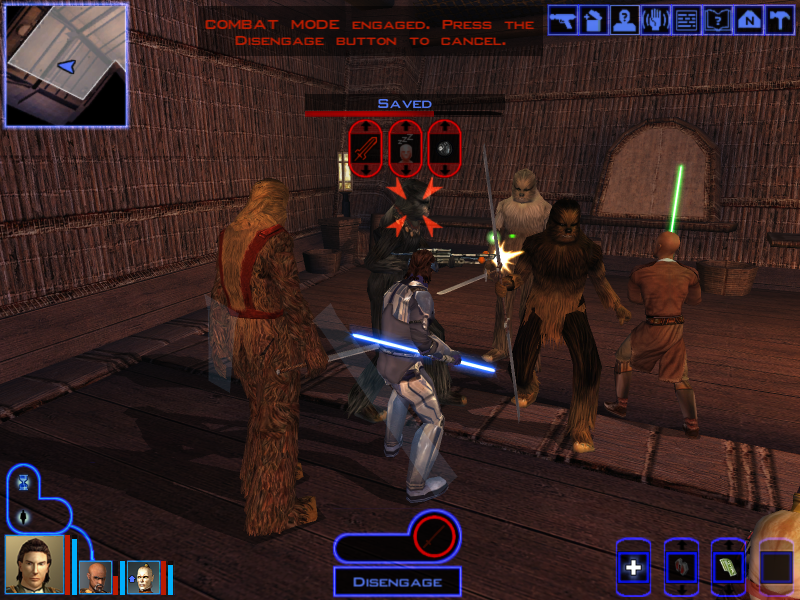
You probably already know what Star Wars is. Hell, you probably already know what the main plot twist of KOTOR is! Running on a modified/simplified version of D&D 3e, it takes place thousands of years before the movies, which means they can just get into the vibe and not worry about affecting canon.
Biggest Point of Appeal:
It's Star Wars. Y'all like Star Wars right? What if you could play an RPG that took place in Star Wars, eh? Lightsabers! Wookies! Droids! More seriously, the broad game structure is rock solid to the extent it became Bioware's winning formula for years.
Biggest Sticking Point:
It's Star Wars. You know exactly how this is all going to go down and the game won't do anything to disabuse this notion. Maybe that's comforting, though!
How'd this get here? It barely squeezed out of every previous category, but simply being a Star Wars RPG means it's a great starting point for anyone unfamiliar with the genre. I personally have greater fondness for the more transgressive sequel - STAR WARS™ Knights of the Old Republic™ II - The Sith Lords™ - but this is meant to be a guide for genre newcomers and I've already long exceeded that scope. Oops.
~
"Excuse me sir I heard you were saving the best for last so that I don't ruin myself on the entire genre by establishing the apex as my baseline expectation?"
Planescape: Torment: Enhanced Edition

A legendary game that uses the Planescape setting from AD&D. It's so influential that pretty much every fantasy CRPG since is chasing its shadow. You play as an immortal amnesiac trying to discover the truth about himself while navigating the disastrous fallout of his previous lives; meanwhile, the writers deliberately mess with as many fantasy cliches as possible.
Biggest Point of Appeal:
Torment has sometimes been called more of an interactive novel than a game, and I'm of the opinion that's a compliment. Companion characters (well, most of them) have genuine layers of depth, and dialogue interactions take a much higher priority than combat to the point where mandatory fights can be counted on one hand.
Biggest Sticking Point:
This game is clunky; when you do have to fight, it's a miserable time. While there's a good amount of choice in your dialogue responses, you're practically railroaded into playing as a Mage if you want the most meaningful story experience. Also, it's still a game from the late 90s, which means it's uncomfortably misogynistic pretty much the whole way through.
This is the game that got me into CRPGs as a genre. I was looking for some games to drown in during the summer of 2009, and the ones I ended up playing were Persona 4 and Planescape: Torment. I feel like I've been chasing that high ever since.
Neverwinter Nights 2: Mask of the Betrayer
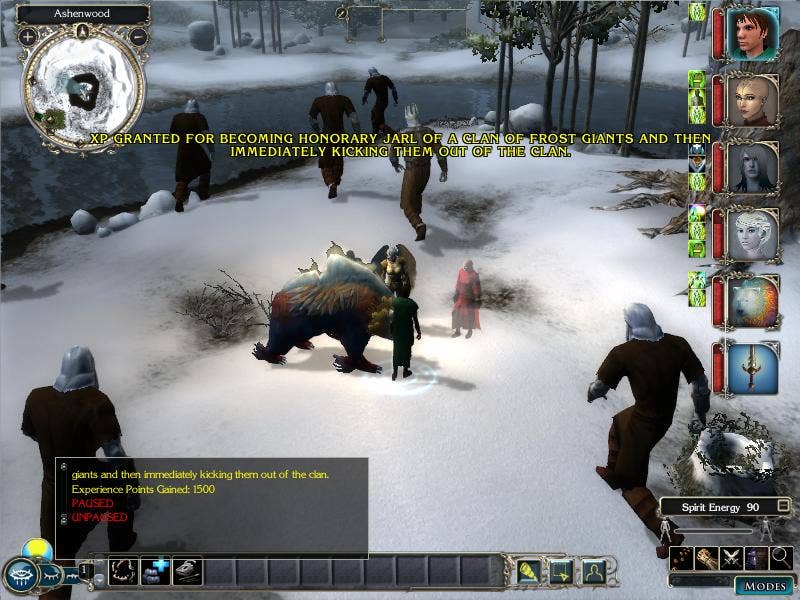
The post-game sequel expansion to Neverwinter Nights 2. Wait, come back!
NWN2 is a bog-standard D&D campaign with a few high spikes, but Mask of the Betrayer justifies the entire damn thing with a new, mostly self-contained story. It takes some obscure lore bits from the Forgotten Realms setting (finally leaving the Sword Coast) and uses them as vectors to examine deeper thematic concepts with a cohesiveness and specificity that's almost unmatched.
Biggest Point of Appeal:
Practically every single quest and character interaction is relevant to Mask of the Betrayer's themes. The game is dense without being tedious; it shows what you can actually manage in the Dungeons & Dragons setting and framework.
Biggest Sticking Point:
It's the post-game sequel expansion to Neverwinter Nights 2. No matter how exceptional the storytelling is, it's still trapped inside a D&D video game with a confusing UI. Depending on the kind of person you are, you might not be comfortable jumping straight to this.
We're absolutely getting out of "starting points for genre beginners" with Mask here, but I felt like I had to mention it because it's (so far) the pinnacle of what D&D can accomplish in this format. Not to get overly adversarial, but every time I saw a review talk about how good the characters and writing was in BG3, my only thought was "they clearly haven't played Mask of the Betrayer."
Disco Elysium - The Final Cut
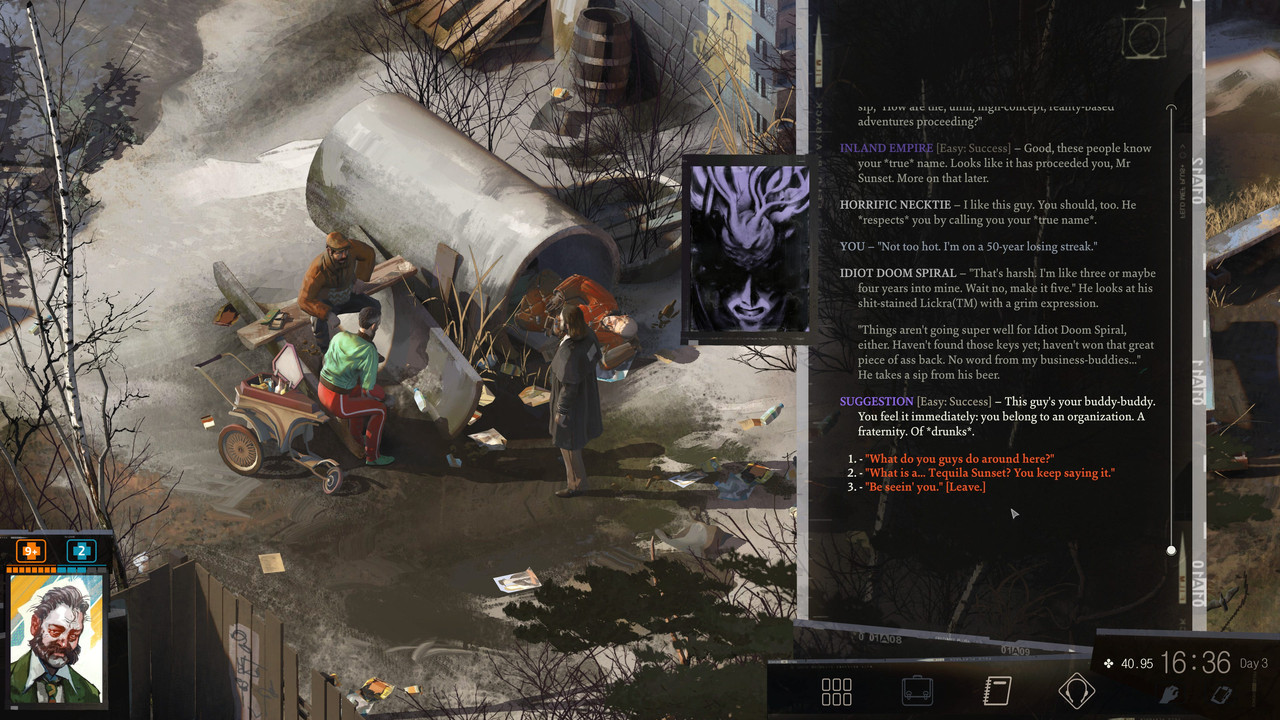
Sick of overtly fantastical settings and want something grounded in contemporary dirt, grime, and capitalism? Want to play a CRPG that actively calls you out for apologizing too much? How about a game that makes you want to fail your dice rolls? Is your dream protagonist a washed-up, drunk disaster of a human being who is also a hustlin' communist? Disco Elysium is here for you.
Biggest Point of Appeal:
To me, a sicko, it's that Disco Elysium has no combat; it's a pure dialogue/exploration game. Your character build determines what kind of dialogue your Detective Inner Monologue feeds you and how you handle skill checks. There may be violent confrontations, but the game never shifts into some kind of turn-based hex grid where you fight people or anything.
Biggest Sticking Point:
See above. If you aren't comfortable playing an overtly political game that's pretty much pure reading - if you need some kind of "active" game element where numbers are going up and down (and hey, no judgement) - then you might bounce off. Picture a Baldur's Gate 3 where you only talk to people, but all of the development resources put into the battle system instead went into interesting dialogue and wacky outcomes during skill checks.
It's also one of the most genuinely hilarious games I've ever played, drawing dark humor even out of extreme, tense situations. It lampoons multiple political ideologies with a wry nuance born from living in the actual aftermath of the Soviet Bloc. It never feels like you're "just" reading a book, because the writing has a real rhythm to it. It's a tremendous achievement that we only see maybe once a decade, and I'd say it's the best CRPG yet made.
(Made with @YellowAfterlife's inline details generator)
---